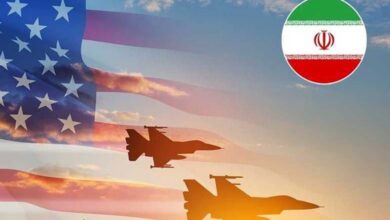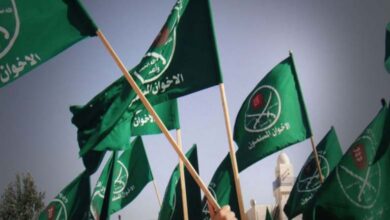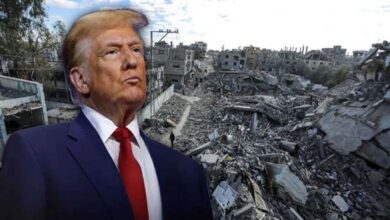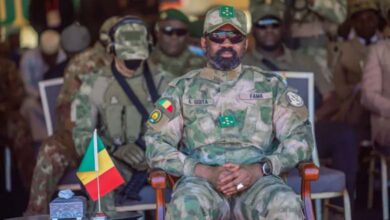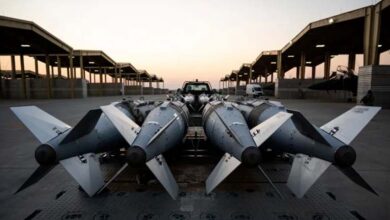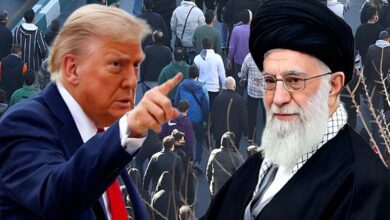Putin and Nuclear Development: Features of an “Ongoing Plan” and “Return of Fear”

Recent Russian statements about nuclear weapons have revolved around developing doctrine and technology, highlighting their increasing importance in the current geopolitical conflict.
The latest of these statements came from Russian President Vladimir Putin, who said during a meeting with graduates of military educational institutions on Friday that Russia plans to continue developing its nuclear weapons, according to the Chinese state news agency Xinhua.
He explained, “Our plan includes continuing to develop the nuclear triad as a guarantee for strategic deterrence and maintaining the balance of power in the world.”
The nuclear triad is a three-dimensional military power structure consisting of land-based intercontinental ballistic missiles (ICBMs), submarine-launched ballistic missiles (SLBMs), and strategic bombers armed with nuclear bombs and missiles. A day earlier, Putin told reporters at the end of his visit to Vietnam on Thursday that his country is considering potential modifications to its doctrine regarding the use of nuclear weapons, but he emphasized that Russia “does not need to carry out a preemptive nuclear strike.”
The current doctrine states that Russia resorts to using these weapons in response to a nuclear attack or in the event of a conventional attack that poses an existential threat to the state, meaning that the use of these weapons is primarily defensive.
How is Russia Developing its Nuclear Weapons?
However, Putin‘s statements about developing nuclear weapons do not mean that this development will happen in the future; it has already begun.
A document issued by the Congressional Research Service (CRS), which operates at the request and under the direction of Congress, on May 21 indicated that U.S. intelligence assessments for 2024 state that Russia “is concluding the modernization of its strategic nuclear forces.”
These updates focus particularly on the development of the heavy SS-X-29 (Sarmat) intercontinental ballistic missile, the SS-27 Mod 2 (intercontinental ballistic missile), and the Borei-class ballistic missile submarine.
Estimates confirm that Russia deploys most of its strategic nuclear warheads on intercontinental ballistic missiles.
Additionally, Russia possesses a variety of dual-capable systems (capable of using either conventional or nuclear warheads), including precision strike missiles, which are not covered by any arms control agreements.
In another sign of development, the document referred to the 2024 annual threat assessment (ATA) issued by the U.S. intelligence community, which stated that “Russia is expanding and modernizing” its dual-capable systems “because Moscow believes it is equipping its options to deter adversaries, control the escalation of potential hostilities, and confront the conventional forces of the United States and its allies.”
“Serious Threat”
The American document also stated that Russia poses a “serious threat” to the United States and its allies, adding, “Since the start of the war in Ukraine in February 2022, Russian President Vladimir Putin has threatened to use nuclear weapons against the West.”
It continued that Russia “has deployed non-strategic nuclear weapons in its ally Belarus and announced the suspension of some commitments under the new START treaty, which limits the strategic nuclear forces of the U.S. and Russia.”
The document cited recent non-governmental estimates, without naming the source, indicating that Russia possesses approximately 1,710 nuclear warheads.
These warheads are deployed across a triad of strategic launch vehicles consisting of about 326 intercontinental ballistic missiles (ICBMs), 12 ballistic missile submarines (SSBNs), 192 submarine-launched ballistic missiles (SLBMs), and 58 strategic bombers.
What About the Doctrine?
Rami Al-Keloubi, a visiting professor at the School of Oriental Studies in Moscow, said that Putin mainly spoke about amending the Russian nuclear doctrine, which specifies only four scenarios for using nuclear weapons:
- Receiving reliable information about the launch of ballistic missiles towards Russia or its allies.
- Receiving information about a potential enemy affecting vital Russian government or military sites.
- Russia or its allies being attacked with weapons of mass destruction.
- Russia being attacked with conventional weapons but facing a threat to its existence as a state.
Regarding the development of these scenarios, Al-Keloubi said, “This time, Putin effectively proposed lowering the threshold for using nuclear weapons and increasing the number of scenarios stipulated in the Russian nuclear doctrine.”
He explained that Putin “relies on the fact that Russia’s enemies in the West are currently developing low-yield nuclear weapons, thus fearing that the use of such weapons might become common.”
He continued, “There are calls among Russian political and military theorists to bring back the fear of nuclear weapons.”
He elaborated, “For example, one of the theorists close to the Kremlin published an article that caused a great stir, saying that if Russia were to use a nuclear weapon against a non-nuclear NATO country, the United States would not respond by striking Russia with nuclear weapons because the victor is not judged.”
Therefore, Al-Keloubi believes that “such ideas were being circulated in the corridors of Russian decision-making, reaching a certain form that might be translated into an amendment to the nuclear doctrine in the near future.”
The Big Picture
Expanding the view, the nuclear-armed countries—the United States, Russia, the United Kingdom, France, China, India, Pakistan, North Korea, and Israel—updated their nuclear arsenals and deployed many of them in 2023.
A recent report by the Stockholm International Peace Research Institute revealed that about 9,585 warheads out of 12,121—the global total in January 2024—were listed as available for potential use.
Approximately 3,904 of these warheads were deployed on missiles and aircraft, 60 more than in January 2023.
According to the institute, nearly all of these warheads belong to Russia and the United States. However, it is believed, for the first time, that China has some warheads in a high operational readiness state.
Dan Smith, director of the Stockholm International Peace Research Institute, stated, “While the total number of nuclear warheads in the world continues to decline due to the gradual dismantling of Cold War-era weapons, we unfortunately see annual increases in the number of warheads in high operational readiness.”
He added, “This trend seems likely to continue and perhaps accelerate in the coming years, which is very concerning.”
Detailing this point, India, Pakistan, and North Korea are seeking to acquire the capability to deploy multiple warheads on ballistic missiles, a capability already possessed by Russia, France, the United Kingdom, the United States, and recently China.
This would allow for a rapid potential increase in warheads placed on high operational readiness, as well as the possibility for nuclear-armed countries to threaten the destruction of a much larger number of targets.
Together, Russia and the United States hold nearly 90% of the total nuclear weapons, and transparency regarding nuclear capabilities in both countries decreased in 2023.


